The Dacia Sandero and the Renault Clio are two popular choices in the hatchback segment, each offering a unique blend of style, performance, and practicality. While they share some similarities, such as seating capacity and front-wheel drive, they diverge significantly in terms of engine options, fuel efficiency, and technological innovations. In this comparison, we delve deep into the specifications, performance metrics, and innovations that make each model worthy of consideration.
Dacia Sandero vs Renault Clio – Performance, range & efficiency compared
Everyday use, family trips or long-distance drives – here’s where the differences show.
Discover whether Dacia Sandero or Renault Clio fits your lifestyle better.
Engine Options and Performance
The Dacia Sandero boasts a range of powertrains, including petrol and LPG engines, delivering outputs from 67 HP to a robust 110 HP. The most powerful variant achieves 0-100 km/h acceleration in just 10 seconds, making it a nimble option in urban traffic. In contrast, the Renault Clio offers a higher-performance lineup, with its full hybrid option producing an impressive 143 HP. The Clio accelerates from 0 to 100 km/h in just 9.3 seconds, embodying a sportier disposition.
Fuel Efficiency
When it comes to fuel consumption, the Dacia Sandero is fairly economical, with figures ranging from 5.2 to 7 L/100 km depending on the engine type. The Clio outshines with even better efficiency, especially with its hybrid variant, recording just 4.3 L/100 km. This makes the Clio a more appealing option for eco-conscious buyers looking to minimize their fuel expenses.
Dimensions and Comfort
Both models comfortably seat five passengers, but there are subtle differences in dimensions. The Sandero measures 4088 mm in length and 1848 mm in width, making it a spacious choice in the hatchback category, with a trunk capacity of 328 liters. Meanwhile, the Clio, slightly smaller at 4053 mm in length and 1798 mm in width, still offers a respectable trunk space of 301 liters in its base configuration, expanding to 391 liters in certain variants.
Modern Innovations
Renault has equipped the Clio with several advanced technological features, especially in its recent model year. Notable innovations include a user-friendly multimedia system with smartphone connectivity and various driver-assistance features, enhancing safety and convenience. It also offers a hybrid option, which represents a significant step towards reducing emissions.
On the other hand, the Dacia Sandero, while simpler, focuses on delivering value for money with features like an intuitive infotainment system and practical interior design. The addition of LPG options is a noteworthy innovation, appealing to budget-conscious drivers looking for greener alternatives.
Driving Experience
The handling and ride quality of both cars are tailored to provide a smooth and comfortable driving experience. The Sandero, with its slightly stiff suspension, provides a planted feel, making it suitable for both city driving and longer journeys. Conversely, the Clio's sportier chassis allows for more dynamic handling, appealing to those who prioritize driving pleasure alongside everyday usability.
Conclusion: Which is Right for You?
Choosing between the Dacia Sandero and Renault Clio ultimately hinges on individual priorities. If fuel efficiency, advanced technology, and a sporty driving experience are paramount, the Clio stands out as the clear winner. However, if budget-friendly pricing and practicality are top concerns, the Sandero makes a compelling case with its robust offerings and value proposition.
Whether you opt for the reliable Sandero or the tech-laden Clio, both vehicles offer an impressive mix of features that cater to different segments of hatchback buyers, ensuring a thoughtful decision based on your lifestyle and needs.
Here’s where it gets real: The technical differences in detail
Costs and Efficiency:
Price and efficiency are often the first things buyers look at. Here it becomes clear which model has the long-term edge – whether at the pump, the plug, or in purchase price.
Dacia Sandero has a clearly advantage in terms of price – it starts at 10700 £, while the Renault Clio costs 16600 £. That’s a price difference of around 5880 £.
Fuel consumption also shows a difference: Renault Clio manages with 4.30 L and is therefore clearly perceptible more efficient than the Dacia Sandero with 5.30 L. The difference is about 1 L per 100 km.
Engine and Performance:
Under the bonnet, it becomes clear which model is tuned for sportiness and which one takes the lead when you hit the accelerator.
When it comes to engine power, the Renault Clio has a clearly perceptible edge – offering 143 HP compared to 110 HP. That’s roughly 33 HP more horsepower.
In acceleration from 0 to 100 km/h, the Renault Clio is minimal quicker – completing the sprint in 9.30 s, while the Dacia Sandero takes 10 s. That’s about 0.70 s faster.
In terms of top speed, the Dacia Sandero performs barely noticeable better – reaching 183 km/h, while the Renault Clio tops out at 174 km/h. The difference is around 9 km/h.
There’s also a difference in torque: Renault Clio pulls minimal stronger with 205 Nm compared to 200 Nm. That’s about 5 Nm difference.
Space and Everyday Use:
Whether family car or daily driver – which one offers more room, flexibility and comfort?
Both vehicles offer seating for 5 people.
In curb weight, Dacia Sandero is slight lighter – 1089 kg compared to 1124 kg. The difference is around 35 kg.
In terms of boot space, the Renault Clio offers to a small extent more room – 391 L compared to 328 L. That’s a difference of about 63 L.
In maximum load capacity, the Dacia Sandero performs barely noticeable better – up to 1108 L, which is about 39 L more than the Renault Clio.
When it comes to payload, Dacia Sandero barely noticeable takes the win – 436 kg compared to 406 kg. That’s a difference of about 30 kg.
Who wins the race?
The Renault Clio proves to be is largely superior and therefore becomes our DriveDuel Champion!
Renault Clio is the better all-rounder in this comparison.
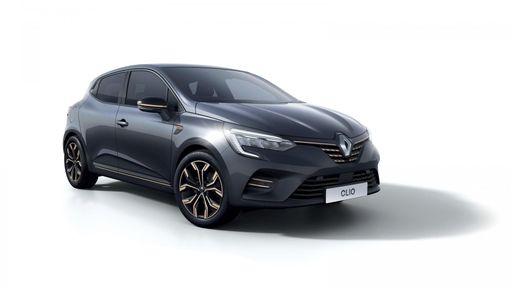 @ Renault Group Media
@ Renault Group Media
Renault Clio
Dacia Sandero
The Dacia Sandero is the everyman's hatchback — unpretentious, practical and brilliantly affordable, with sensible space and straightforward charm where it matters most. It won't wow in the premium lane, but for buyers who want honest, dependable transport without showroom theatrics, the Sandero is a clever, no‑nonsense pick that keeps running costs low and grin levels high.
details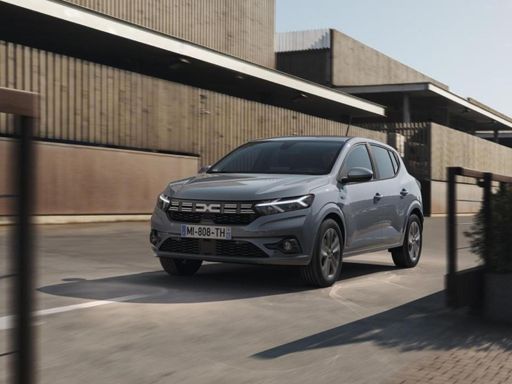 @ Dacia / Renault Group Media
@ Dacia / Renault Group Media
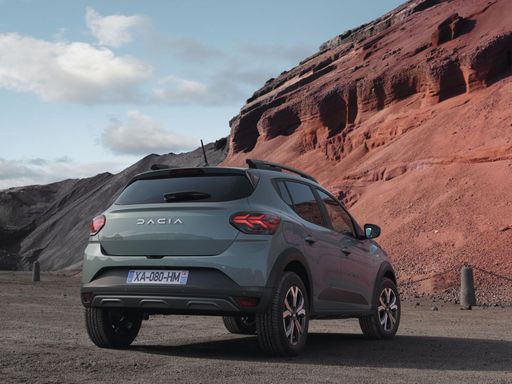 @ Dacia / Renault Group Media
@ Dacia / Renault Group Media
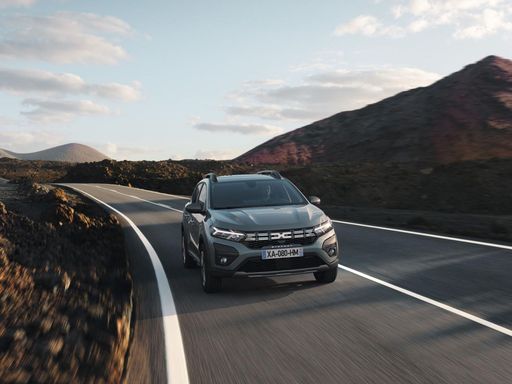 @ Dacia / Renault Group Media
@ Dacia / Renault Group Media
Renault Clio
The Clio punches above its weight with chic French styling and a surprisingly grown-up cabin that makes city driving feel effortlessly stylish. It's an easy-to-live-with choice that keeps ownership simple and even manages to put a grin on your face when the traffic gets dull.
details @ Renault Group Media
@ Renault Group Media
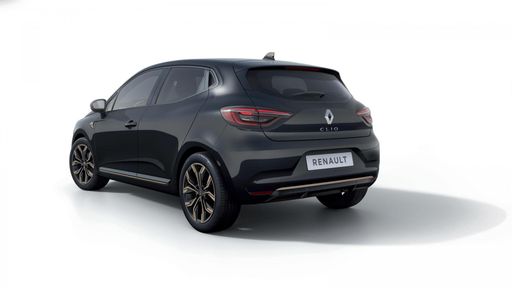 @ Renault Group Media
@ Renault Group Media
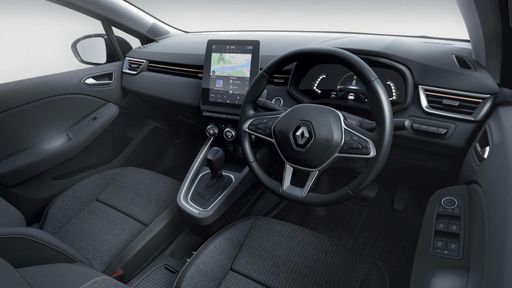 @ Renault Group Media
@ Renault Group Media
 @ Dacia / Renault Group Media
@ Dacia / Renault Group Media
|
 @ Renault Group Media
@ Renault Group Media
|
|
|
|
Costs and Consumption |
|
|---|---|
|
Price
10700 - 16700 £
|
Price
16600 - 23000 £
|
|
Consumption L/100km
5.3 - 7.1 L
|
Consumption L/100km
4.3 - 5.3 L
|
|
Consumption kWh/100km
-
|
Consumption kWh/100km
-
|
|
Electric Range
-
|
Electric Range
-
|
|
Battery Capacity
-
|
Battery Capacity
0.60 kWh
|
|
co2
105 - 140 g/km
|
co2
97 - 121 g/km
|
|
Fuel tank capacity
32 - 50 L
|
Fuel tank capacity
39 - 42 L
|
Dimensions and Body |
|
|---|---|
|
Body Type
Hatchback
|
Body Type
Hatchback
|
|
Seats
5
|
Seats
5
|
|
Doors
5
|
Doors
5
|
|
Curb weight
1089 - 1209 kg
|
Curb weight
1124 - 1331 kg
|
|
Trunk capacity
328 L
|
Trunk capacity
301 - 391 L
|
|
Length
4088 - 4099 mm
|
Length
4053 mm
|
|
Width
1848 mm
|
Width
1798 mm
|
|
Height
1499 - 1535 mm
|
Height
1440 mm
|
|
Max trunk capacity
1108 L
|
Max trunk capacity
979 - 1069 L
|
|
Payload
404 - 436 kg
|
Payload
398 - 406 kg
|
Engine and Performance |
|
|---|---|
|
Engine Type
Petrol, LPG
|
Engine Type
Full Hybrid, Petrol
|
|
Transmission
Manuel, Automatic
|
Transmission
Automatic, Manuel
|
|
Transmission Detail
Manual Gearbox, CVT
|
Transmission Detail
Automatic Gearbox, Manual Gearbox
|
|
Drive Type
Front-Wheel Drive
|
Drive Type
Front-Wheel Drive
|
|
Power HP
67 - 110 HP
|
Power HP
67 - 143 HP
|
|
Acceleration 0-100km/h
10 - 16.7 s
|
Acceleration 0-100km/h
9.3 - 17.1 s
|
|
Max Speed
158 - 183 km/h
|
Max Speed
160 - 174 km/h
|
|
Torque
95 - 200 Nm
|
Torque
95 - 205 Nm
|
|
Number of Cylinders
3
|
Number of Cylinders
3 - 4
|
|
Power kW
49 - 81 kW
|
Power kW
49 - 105 kW
|
|
Engine capacity
999 cm3
|
Engine capacity
999 - 1598 cm3
|
General |
|
|---|---|
|
Model Year
2024 - 2025
|
Model Year
2023 - 2025
|
|
CO2 Efficiency Class
D, C, E
|
CO2 Efficiency Class
C, D
|
|
Brand
Dacia
|
Brand
Renault
|
What drive types are available for the Dacia Sandero?
The Dacia Sandero is available as Front-Wheel Drive.
The prices and data displayed are estimates based on German list prices and may vary by country. This information is not legally binding.
